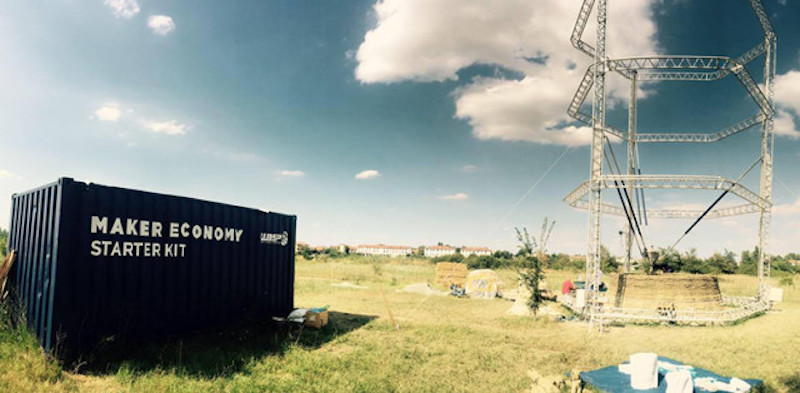
For most businesses, the hype of the 3D printing industry was an opportunity to innovate with new technology and make a few bucks, or vice versa depending on which was prioritized.
For others, like Italy’s WASP (World’s Advanced Saving Project), 3D printing presented an entirely new way of making things, even an inspiration for utopian ideals, such as affordable housing for all and an economy without money.
When WASP began manufacturing professional desktop 3D printers, the goal was actually to fulfill the backronym of the company’s namesake, the World’s Advanced Saving Project. In 2012, WASP began selling such systems as the PowerWASP and the DeltaWASP in order to fund research dedicated to, well, saving the world. The first project toward that end was the creation of the BigDelta 3D printer, which was designed to 3D print sustainable housing for those in need.
Throughout the development process, the Italian firm has created unique technologies, embarked on other world-saving endeavors and even reimagined a new world financial system dubbed “the maker economy.” With the BigDelta officially unveiled in 2015, WASP now has an even greater task at hand—the successful completion of a clay and straw house at the SHAMBALLA Technological Village in Massa Lombarda, Italy.
What drives a company to work toward innovating not just technology but also entire socioeconomic paradigms? ENGINEERING.com went to the source and asked the company’s founder, Massimo Moretti.
The Makers Manifesto
In the “About Us” sections of most corporate websites, one will find, perhaps, a brief history of the company, a list of the board of directors and a sentence or two about a commitment to innovation and solving the problems of our world.
What you won’t find is a manifesto that reads, “The power of money and finance is based on the monopoly of production capacity; the WASP project works to make it public,” “The Earth’s resources are not enough to support the existing population explosion and to change the growth models is no longer an option but rather an urgent need” or “Everything is mind, everything is change, reality is the result of shared thoughts.” These are just three of the seven points outlined in WASP’s manifesto.
Moretti elaborated on the guiding philosophy of the company. “WASP’s philosophy is based on the theme of low-cost production, of making with what you have at the moment. WASP was born from a laboratory that develops projects, and, for a model of development, we chose the wasp because it creates with what it has available,” Moretti said.
“Our approach has always been the same: ‘Thoughts take shape’ is our motto,” he added.
“Another principle that has always accompanied us in our work is that the value of an action always depends on the motivation that pushes you to act. WASP develops technologies useful for the world: we believe in that, and this is our motivation.”
From the very foundation, WASP’s approach to the 3D printing marketplace is unique, seemingly driven, not by profit, but for actually helping a world in need. Stating the belief that “the house is a primary need and a right,” money, for WASP, is merely a means of funding that project.
Moretti began building 3D printers as a path toward developing the large-scale BigDelta to construct entire homes using local resources for those in need. He explained, “We are developing low environmental impact and low-cost mixtures of materials, [as well as] projects that take account of these materials and an architectural processes based on these projects. All these elements are collected in a plan that can be replicated with the big printer, while our DeltaWASP printers are reproductions on a smaller scale of the big printer, and they are produced as economical support means for the bigger project of the printed house.”
Read more at ENGINEERING.com

